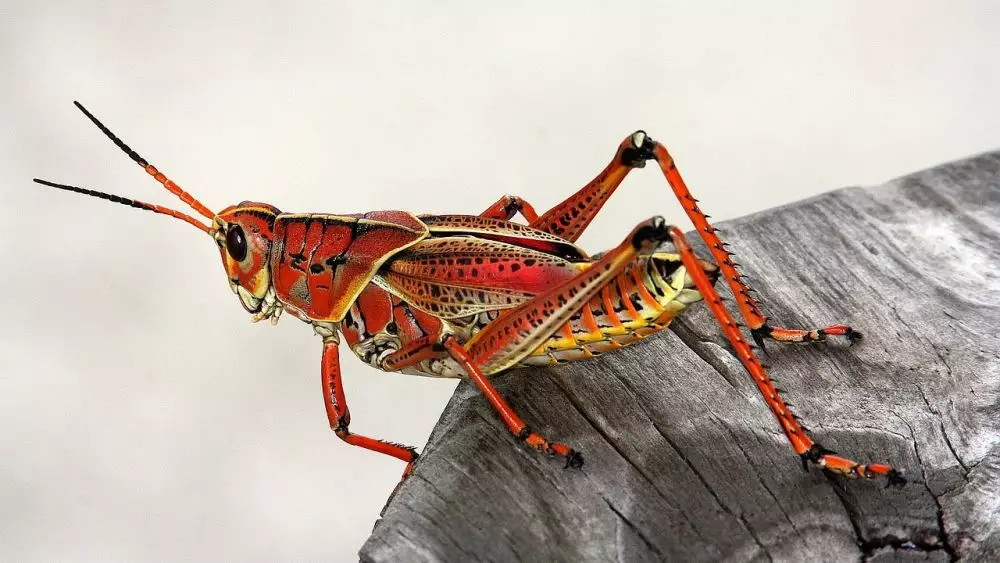foto: Freepik.com/Pixabay.com
Brilio.net - Insects have a complex body structure with various unique parts. One of the important parts of the insect's body is the pronotum. The pronotum is the front part of the insect's thorax or chest which functions as a protector.
The term pronotum is often used in entomology, a branch of biology that studies insects. This part is located in the thorax area and has different shapes and characteristics in each type of insect. The pronotum is usually in the form of a slightly protruding but flat plate.
The main function of the pronotum in insects is similar to the ribs in mammals, which is to protect the chest cavity. This part feels harder than other parts of the body when touched. The pronotum can also have bright colors or certain patterns in some insect species.
Although important, the pronotum is often difficult to observe because of its position facing the ground. This is due to the way insects walk which tends to be slanted or horizontal. To observe the pronotum in small insects such as ants, a microscope is needed.
The pronotum can be found in various types of insects, including cockroaches, grasshoppers, beetles, and even butterflies. This part not only serves as protection, but can also play a role in the pollination process of plants. Pollen sometimes sticks to the insect's pronotum when it lands on the flower crown.
Examples of pronotum sentences in biology discussions.

photo: Pixabay.com
1. The pronotum of the Periplaneta americana cockroach has a yellowish color in the middle which is surrounded by a brown color.
2. The shape of the pronotum varies from one type of insect to another.
3. Researchers observed the structure of the grasshopper pronotum using an electron microscope.
4. The bright colors on the pronotum of some insect species serve as camouflage.
5. The rhinoceros beetle's pronotum has protrusions that resemble horns.
6. The size of the ant's pronotum is so small that it is difficult to observe without the aid of a tool.
7. The pattern of spots on the ladybug's pronotum helps identify its species.
8. The dragonfly pronotum is flat and widens at the sides.
9. Insects of the order Orthoptera have a pronotum that covers most of the thorax.
10. The function of the pronotum in crickets is to protect the vital organs in the chest area.
11. The pronotum in cockroaches plays a role in the body's thermoregulation process.
12. The texture of the ground beetle pronotum tends to be rough and wavy.
13. The monarch butterfly has a pronotum covered with fine scales.
14. The shape of the moth pronotum can be used as a key to species identification.
15. The pronotum of worker termites is smaller than the pronotum of soldier termites.
16. The color of the pronotum on the leafhopper resembles the color of the leaves for camouflage.
17. Aquatic insects have a pronotum adapted for aquatic life.
18. The pronotum of the fruit fly is very small and difficult to observe without a microscope.
19. The structure of the firefly pronotum plays a role in producing light.
20. The pronotum of a honey bee is covered with fine hairs that aid in pollination.
21. The rhinoceros beetle has a pronotum equipped with horn-like protrusions.
22. The shape of the katydid's pronotum helps produce its characteristic sound.
23. The pronotum of tropical forest cockroaches has an intricate camouflage pattern.
24. Parasitic insects such as ticks have a very small and reduced pronotum.
25. The pronotum of wolf spiders functions to protect the venom glands.
Examples of pronotum sentences in everyday life.

photo: Pixabay.com
26. Children learn to identify insect pronotum in biology class.
27. Insect collectors look at the color of the pronotum to determine the species of beetle.
28. Farmers observe the pronotum of plant pests to identify their type.
29. The agricultural extension worker explains the function of the pronotum in beneficial insects.
30. Macro photographers focus their lenses on the butterfly's pronotum to produce sharp details.
31. Pet insect keepers check the condition of the pronotum to monitor health.
32. A forensic entomologist analyzes the pronotum of a fly to determine the time of death.
33. Jewelry designers were inspired by the shape of the beetle's pronotum to create unique accessories.
34. The artist creates a detailed painting of a grasshopper's pronotum at 100x magnification.
35. Children's book authors describe the ant's pronotum as a "miniature protective vest."
36. Documentary filmmakers recorded the movement of a cockroach's pronotum as it ran.
37. The tour guide shows the pronotum of rare insects to forest visitors.
38. Experimental chefs use the shape of the pronotum as inspiration for plating dishes.
39. Field researchers record the characteristics of the pronotum of a new insect species.
40. High school students create 3D models of the pronotum of various insects for a science fair.
41. Entomology enthusiasts discuss the color variations of beetle pronotums in an online forum.
42. The biology book illustrator draws details of the pronotum of various types of insects.
43. Educational toy makers designed puzzles shaped like insect pronotums.
44. Butterfly garden keepers look at the pronotum to determine the species being kept.
45. Taxonomists use characteristics of the pronotum to classify new species.
46. Insect robot designers mimic the shape of the pronotum to increase stability.
47. A wildlife show host explains the function of the pronotum in nocturnal insects.
48. Macro photography competition participants compete to take the most detailed pictures of the pronotum.
49. Halloween costume makers were inspired by the shape of a giant beetle's pronotum for their mask designs.
50. Beekeepers pay attention to the condition of the pronotum to detect signs of disease.
(brl/wen)